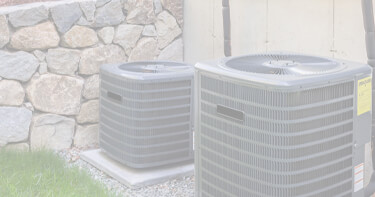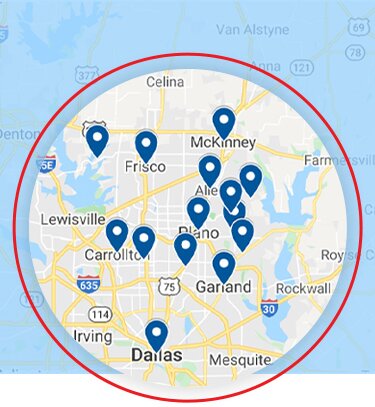
What Is Emergency Heat on a Thermostat?
Homeowners who rely on a heat pump to maintain the comfort of their Plano home may notice that their thermostat features an emergency heat setting. This is the system’s backup heating, which is used in extreme cold conditions or when your heat pump fails. However, if you notice the EM heat light on, don’t be alarmed. Unless it happens frequently, a heat pump’s emergency heat mode doesn’t necessarily mean there is an issue with your system.
In this article, the HVAC experts at Total Air outline the function of emergency heat mode, along with when it should be used and common misconceptions.

What Is Emergency Heat?
Many homeowners wonder, what is EM heat and how does it work? Your thermostat’s emergency heat setting powers a secondary heating source that bypasses the heat pump entirely. Intended for minimal use, emergency heat acts as peace of mind for homeowners—ensuring that even when their heat pump is unable to warm their home, they still have a backup system in place for comfort.
How Does Emergency Heat Work?
When you use the emergency heat’s manual activation, your system will immediately stop using your heat pump and instead run the backup heat source. This backup heating utilizes electric resistance heating or a gas/oil furnace to help ensure your comfort is maintained. Operation of emergency is less efficient and more expensive, which is why it should only be utilized in emergency situations.
When Should You Use Emergency Heat?
Emergency Heat vs. Auxiliary Heat
If you’re wondering why your emergency heat light is on even though you haven’t changed the setting, it’s likely that your system is in auxiliary heat mode. Unlike emergency heat, auxiliary heat is automatically activated when temperatures are too low for your heat pump to work alone. This allows your heat pump to work in tandem with your backup heating source to ensure your total comfort.
Common Misconceptions About Emergency Heat
There are many misconceptions about the emergency heat setting for heat pumps. This includes:
- Emergency heat should always be used in cold weather: Heat pumps are designed to work effectively even in low temperatures and will activate auxiliary heat automatically if necessary.
- Emergency heat means your heat pump is broken: If your emergency heat light is on, it could be in auxiliary heat mode, and that doesn’t mean your heat pump has failed. However, if this happens often, you may need repairs.
- Emergency heat is more effective at heating: Although emergency heat may feel warmer than the heat transferred by your heat pump, it is far less efficient.
Depend On Total Air for Heat Pump Service
If your home is using emergency heat due to a heat pump malfunction, trust Total Air for superior service. Our team of licensed and insured technicians offers a full range of heat pump services to ensure your home comfort is always operating at peak performance. Plus, with 24/7 emergency services backed by over 60 years of experience, we’re not comfortable until you are.
Schedule heat pump services for your Plano home by calling Total Air today.
a step above the rest
awards & community involvement
awards & community involvement
a step above the rest










